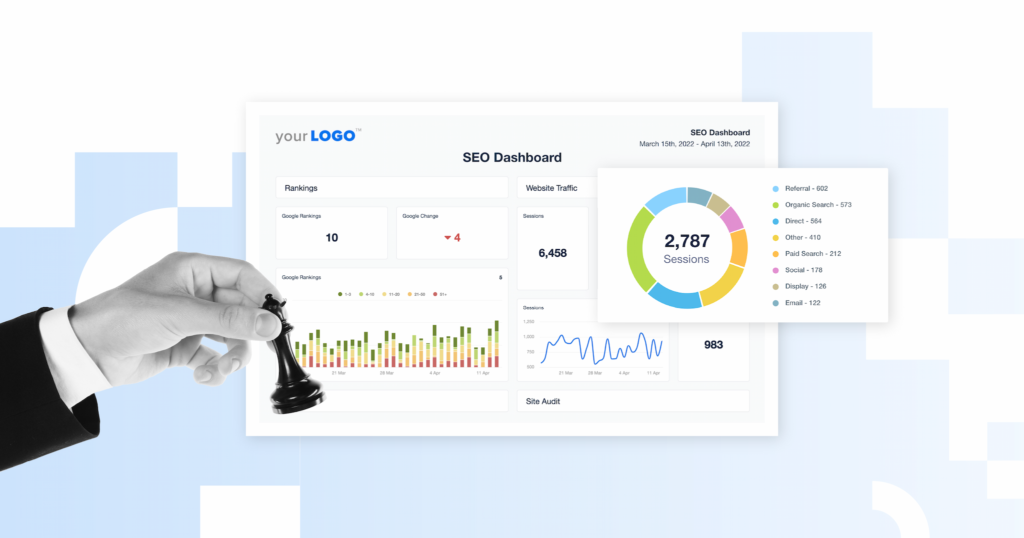Understanding Digital Marketing Metrics and Why They Matter
In the fast-paced digital world, businesses rely on data-driven strategies to ensure their marketing efforts yield the desired results. Without accurate measurement and analysis, companies may struggle to determine whether their campaigns are effective. This is where digital marketing metrics come into play. These indicators help businesses track performance, optimize strategies, and maximize return on investment (ROI).
Digital marketing metrics offer insights into various aspects of a campaign, from audience engagement to conversion rates. By leveraging analytics tools, marketers can fine-tune their strategies and allocate resources efficiently. Understanding these metrics is crucial for ensuring sustained growth and success in the online marketplace.
Key Performance Indicators (KPIs) in Digital Marketing
1. Website Traffic
One of the fundamental digital marketing metrics is website traffic, which indicates how many users visit a site over a specific period. Traffic sources include organic search, direct visits, social media, and referral links. A steady increase in traffic often signals growing brand awareness and effective marketing tactics.
Analyzing traffic patterns can help businesses identify which channels drive the most visitors. By focusing on high-performing sources, marketers can enhance their strategies to attract and retain more users.
2. Bounce Rate
Bounce rate measures the percentage of visitors who leave a website after viewing only one page. A high bounce rate often suggests that the content isn’t engaging enough or that the website experience needs improvement. Factors such as slow loading times, poor design, or irrelevant content can contribute to this issue.
Reducing bounce rates requires optimizing the user experience, ensuring mobile friendliness, and creating compelling content that encourages visitors to explore multiple pages.
3. Conversion Rate
Conversion rate is one of the most critical digital marketing metrics, as it indicates how many visitors take a desired action, such as making a purchase, signing up for a newsletter, or filling out a contact form. A low conversion rate could mean that the website lacks clear calls to action (CTAs) or that the user journey isn’t optimized for conversions.
Improving conversion rates often involves A/B testing, refining landing pages, and personalizing content to align with audience preferences.
Social Media Metrics: Measuring Engagement and Reach
4. Engagement Rate
Engagement rate measures interactions such as likes, comments, shares, and clicks on social media posts. High engagement indicates that content resonates with the audience, while low engagement may require adjustments in content strategy.
Marketers can enhance engagement by posting high-quality visuals, leveraging trending topics, and responding to audience interactions promptly.
5. Follower Growth
Growing a strong follower base is essential for expanding brand reach. Monitoring follower growth over time helps businesses understand whether their social media strategies are effective. Sudden drops or stagnation in growth could indicate a need for content optimization or increased audience interaction.
Leveraging influencer marketing, running social media ads, and maintaining a consistent posting schedule can help accelerate follower growth.
6. Click-Through Rate (CTR)
CTR represents the percentage of users who click on a link within a social media post or ad. A high CTR indicates that the content is compelling and relevant to the target audience. Low CTR, on the other hand, suggests that improvements are needed in ad copy, visuals, or audience targeting.
Optimizing headlines, testing different ad creatives, and refining audience segmentation can help increase CTR over time.
Email Marketing Analytics: Understanding Subscriber Behavior
7. Open Rate
Open rate tracks how many recipients open an email after receiving it. This metric provides insights into the effectiveness of email subject lines and sender reputation. A low open rate may indicate that emails are getting lost in spam folders or that the subject lines fail to grab attention.
Improving open rates involves crafting compelling subject lines, personalizing emails, and maintaining a healthy subscriber list.
8. Click-to-Open Rate (CTOR)
This metric measures how many email recipients click on a link within an opened email. CTOR helps marketers determine whether their email content is engaging enough to drive user action.
Enhancing CTOR requires optimizing email design, using persuasive CTAs, and segmenting audiences for more personalized messaging.
9. Unsubscribe Rate
Tracking unsubscribe rates helps businesses gauge audience satisfaction with their email campaigns. A rising unsubscribe rate may indicate that the content is irrelevant, emails are sent too frequently, or subscribers are receiving too many promotional messages.
Marketers can reduce unsubscribe rates by delivering valuable content, adjusting email frequency, and allowing users to customize their subscription preferences.
SEO Metrics: Tracking Organic Performance

10. Keyword Rankings
Keyword rankings indicate where a website appears in search engine results for specific terms. Higher rankings lead to increased organic traffic and better visibility. Regularly tracking keyword performance helps businesses refine their SEO strategies.
Optimizing on-page content, building high-quality backlinks, and focusing on user intent can improve keyword rankings over time.
11. Domain Authority (DA) and Page Authority (PA)
DA and PA measure a website’s credibility and ranking potential based on factors such as backlinks and content quality. Higher authority scores contribute to better search engine visibility.
Improving DA and PA involves earning backlinks from reputable sources, creating shareable content, and maintaining a consistent SEO strategy.
12. Organic Traffic Growth
Monitoring organic traffic growth helps businesses assess the effectiveness of their SEO efforts. A steady increase in organic visitors signals improved search engine performance, while a decline may indicate algorithm updates or SEO strategy gaps.
To boost organic traffic, marketers should focus on content optimization, technical SEO improvements, and link-building strategies.
Conclusion: Leveraging Metrics for Marketing Success
Understanding and tracking digital marketing metrics is essential for optimizing campaigns, improving user experience, and maximizing ROI. By analyzing website traffic, social media engagement, email performance, and SEO metrics, businesses can make data-driven decisions that lead to sustained growth.
Regularly monitoring key performance indicators and adapting strategies accordingly ensures that marketing efforts remain effective in a competitive digital landscape. Investing in analytics tools and staying updated with industry trends can further enhance the ability to measure and achieve success in digital marketing.
